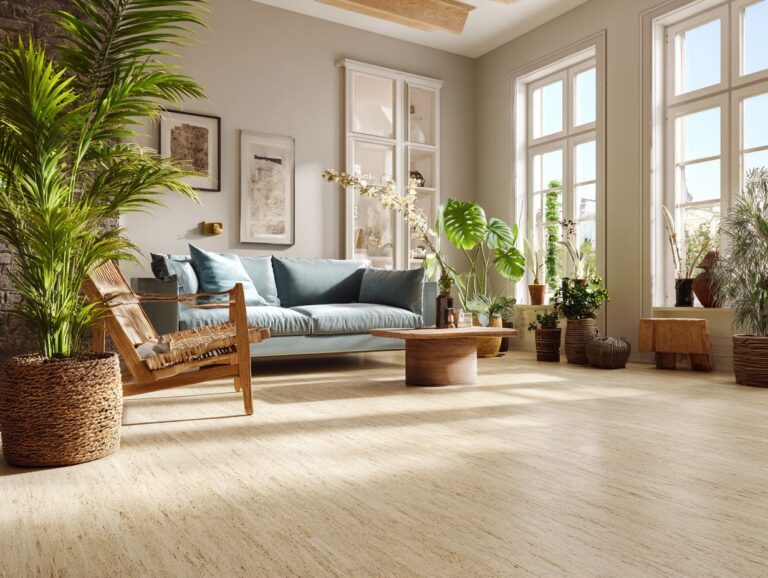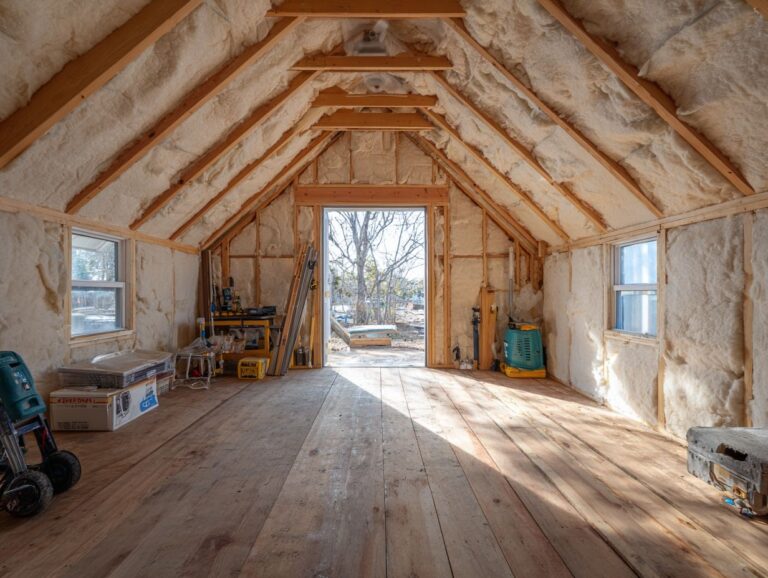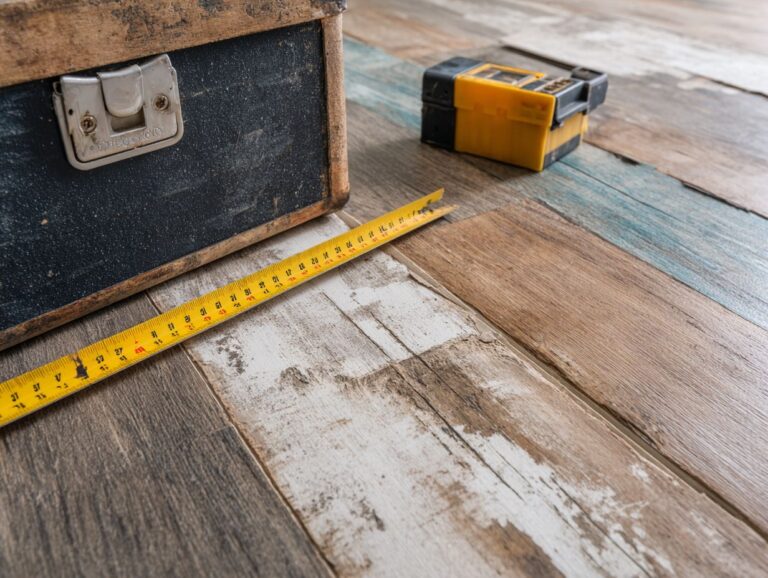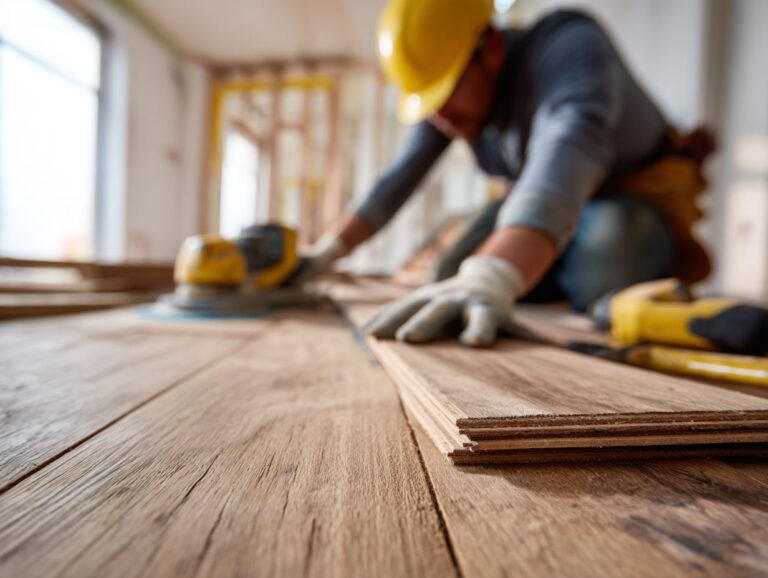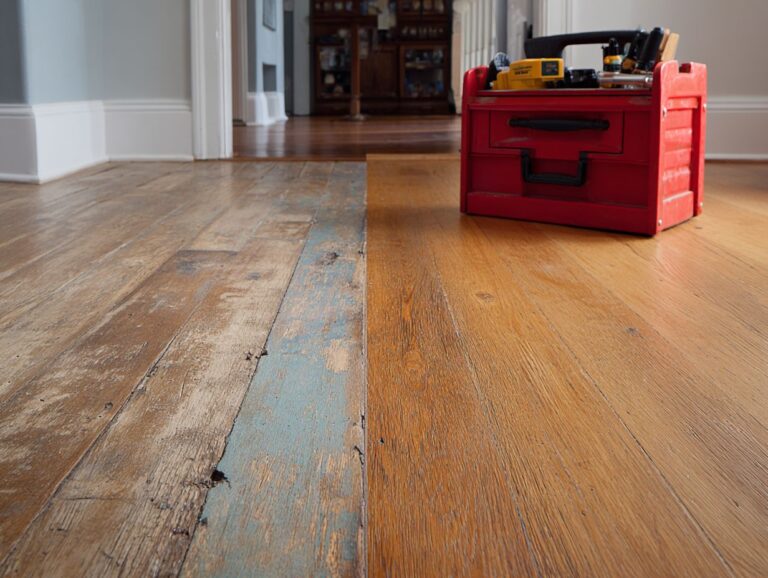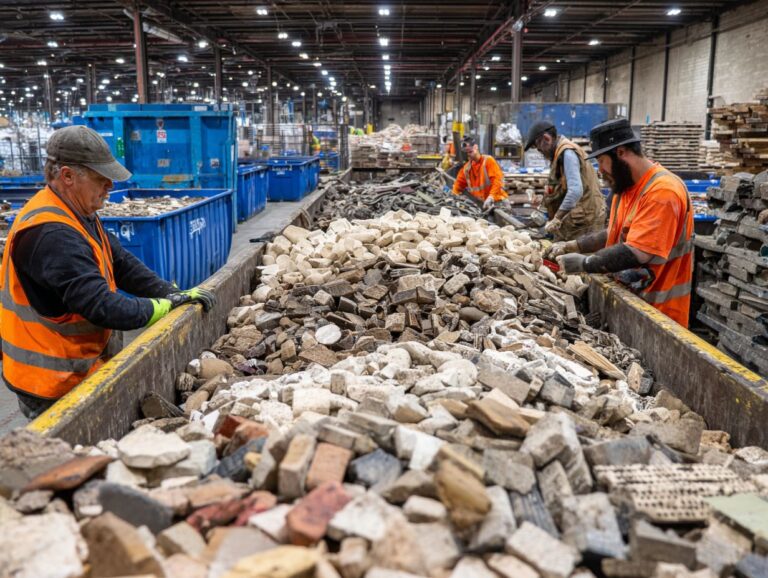Wide Plank Flooring Trend – Pros and Cons
Wide plank flooring is becoming very popular in interior design, combining a modern look with classic appeal. Whether you’re thinking about hardwood or engineered wood options, this flooring choice can greatly increase your property value and improve its look. In this article, we’ll look at the advantages and disadvantages of wide plank flooring to help you decide if it’s right for your floor installation. Find out why this trend catches attention, and be aware of possible downsides.
Key Takeaways:
Contents
- Pros of Wide Plank Flooring
- Cons of Wide Plank Flooring
- Comparison with Traditional Flooring
- Environmental Impact
- Wood and General Flooring Market Statistics
- Additional Resources
- Frequently Asked Questions
- What is the Wide Plank Flooring trend?
- What are the pros of using Wide Plank Flooring?
- What are the cons of using Wide Plank Flooring?
- Is Wide Plank Flooring suitable for all types of homes?
- What are the different types of wood used for Wide Plank Flooring?
- Can Wide Plank Flooring be used in high-traffic areas?
Definition and Overview
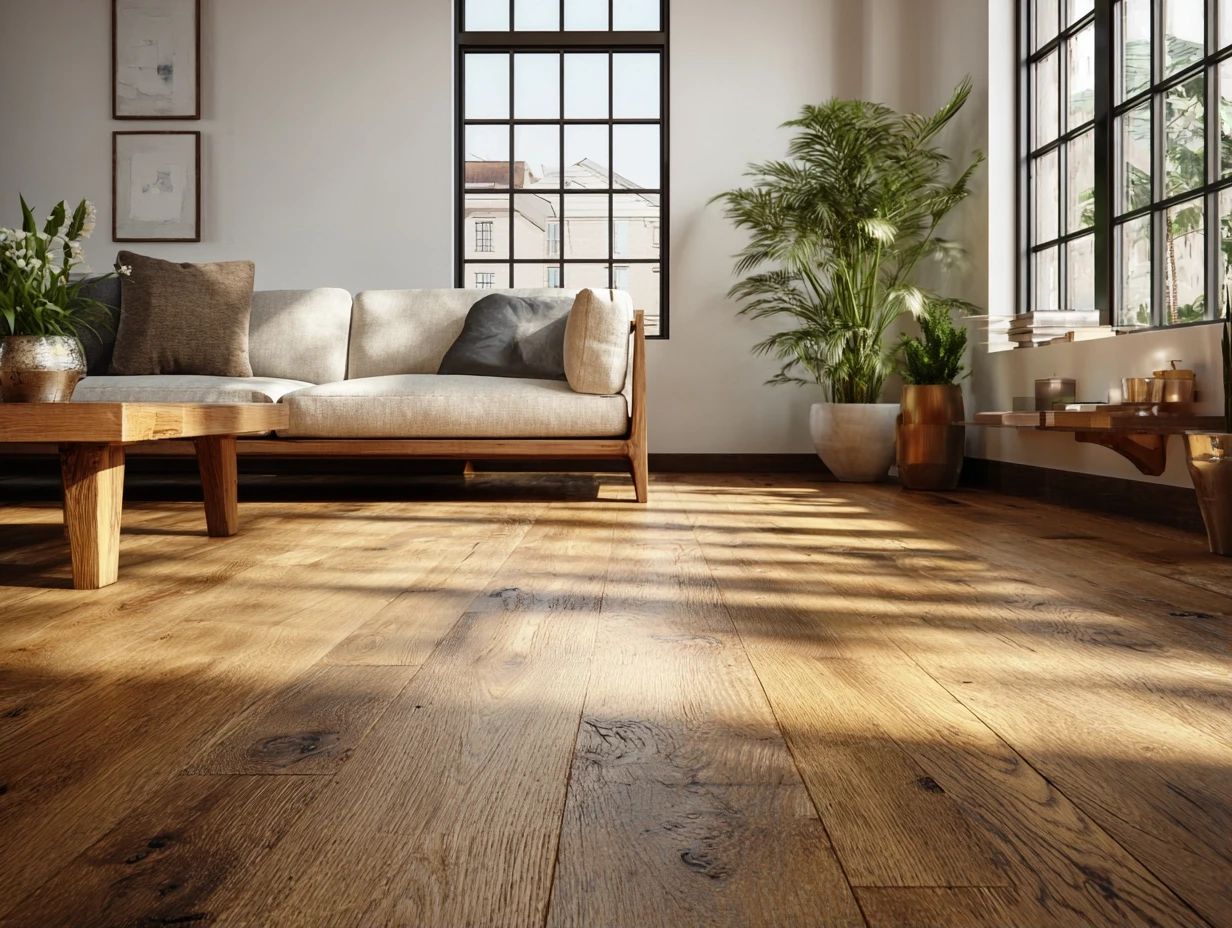
Wide plank flooring typically features boards that are over 5 inches wide, made from solid or engineered wood, providing a distinct look compared to narrower planks.
These boards typically measure between 5 and 12 inches wide, giving a charming look to both modern and traditional areas.
Common wood species for wide plank flooring include:
- Oak, known for its durability and strength;
- Maple, which offers a lighter, contemporary look;
- Hickory, recognized for its unique grain patterns.
When selecting wide plank flooring, consider the finish options-oil-based or water-based-that can impact both appearance and maintenance requirements.
Let the boards adjust to your home’s humidity to avoid warping.
Historical Context
In the past, wide plank flooring was common in colonial homes, highlighting the skillful work with local wood and adding a rustic appeal that many homeowners desire today.
In the 18th and 19th centuries, wide planks emphasized practicality and durability, perfect for high-traffic areas. Today, this flooring has moved beyond its traditional origins and is now part of modern designs too.
Modern manufacturers now offer engineered wood options that mimic the wide plank aesthetic while providing greater stability against humidity. These styles are popular in both traditional homes, where the historical feel is preserved, and in modern spaces, where they serve as a striking contrast to sleek furnishings.
The flexible nature of wide plank flooring makes it a lasting option for different building designs.
Pros of Wide Plank Flooring
Picking wide plank flooring provides many benefits, improving the look and use of your area.
Aesthetic Appeal
Wide plank flooring creates a striking visual impact, showcasing the natural beauty of wood grain patterns and contributing to the overall ambiance of any room.
Wide planks made from different types of wood improve the look and offer a range of uses.
For instance, oak, known for its durability and pronounced grain, works well in rustic settings, while walnut offers a rich, dark hue that adds sophistication to modern interiors.
Maple provides a lighter option with subtle variations in its grain, making it ideal for contemporary styles. Combining different species can create unique, layered looks, enhancing the overall design while ensuring each plank stands out beautifully.
Perceived Value
Putting in wide plank flooring can greatly increase what your property is worth and attract buyers interested in luxury and modern design.
Research indicates that homes featuring wide plank flooring can see a resale value increase of 10-15%. This is especially true in luxury markets, where potential buyers often look for top-quality finishes to show high standards.
For example, hardwoods such as oak or recycled barn wood look great and appeal to environmentally aware buyers. Tools like HomeAdvisor can help calculate your return on investment. They provide information on how certain updates can affect your property value.
Wide plank flooring is a good choice that improves looks and makes properties more attractive to buyers.
Fewer Seams
Wide plank flooring has fewer seams than standard flooring, providing a smooth appearance that helps spaces look more connected and spacious.
This design choice improves looks and makes upkeep easier. Fewer seams mean less dust collects, making it easier to sweep and mop.
The installation process for wide planks can be quicker, as fewer boards reduce the time spent on alignment and fitting. Consider opting for pre-finished wide planks, which eliminate the need for sanding and sealing on-site, further streamlining the installation and enhancing durability.
The outcome is a tidy and simple space that requires little work.
Easy Installation
Wide plank flooring is often simpler to lay down compared to narrower options, which makes it a favorite for DIY fans looking for a modern appearance.
For a smooth DIY installation, start by gathering essential tools: a taping measure, a saw (circular or miter), a hammer, and spacers.
Begin with acclimating the wood planks in the installation area for 48 hours to prevent warping. Lay down a moisture barrier, then start placing the planks, ensuring to stagger the seams for stability.
Use the hammer and tapping block to secure the planks tightly together, leaving a small expansion gap along the walls. This easy process makes installation simple while keeping high standards.
Durability
Both engineered and solid wide plank flooring are very strong and can handle the daily use and abuse that comes with regular living.
Engineered wood flooring typically features a top layer of hardwood and multiple layers of plywood beneath, which helps avoid water damage and warping. It generally has a lifespan of 20-30 years, often backed by a 25-year warranty.
In contrast, solid hardwood, renowned for its classic beauty, can last over 100 years if properly maintained, and usually comes with a lifetime warranty. It is more susceptible to scratches and moisture damage.
When choosing, consider your specific needs: for high-moisture areas like basements, engineered wood is often the wiser choice.
Cons of Wide Plank Flooring
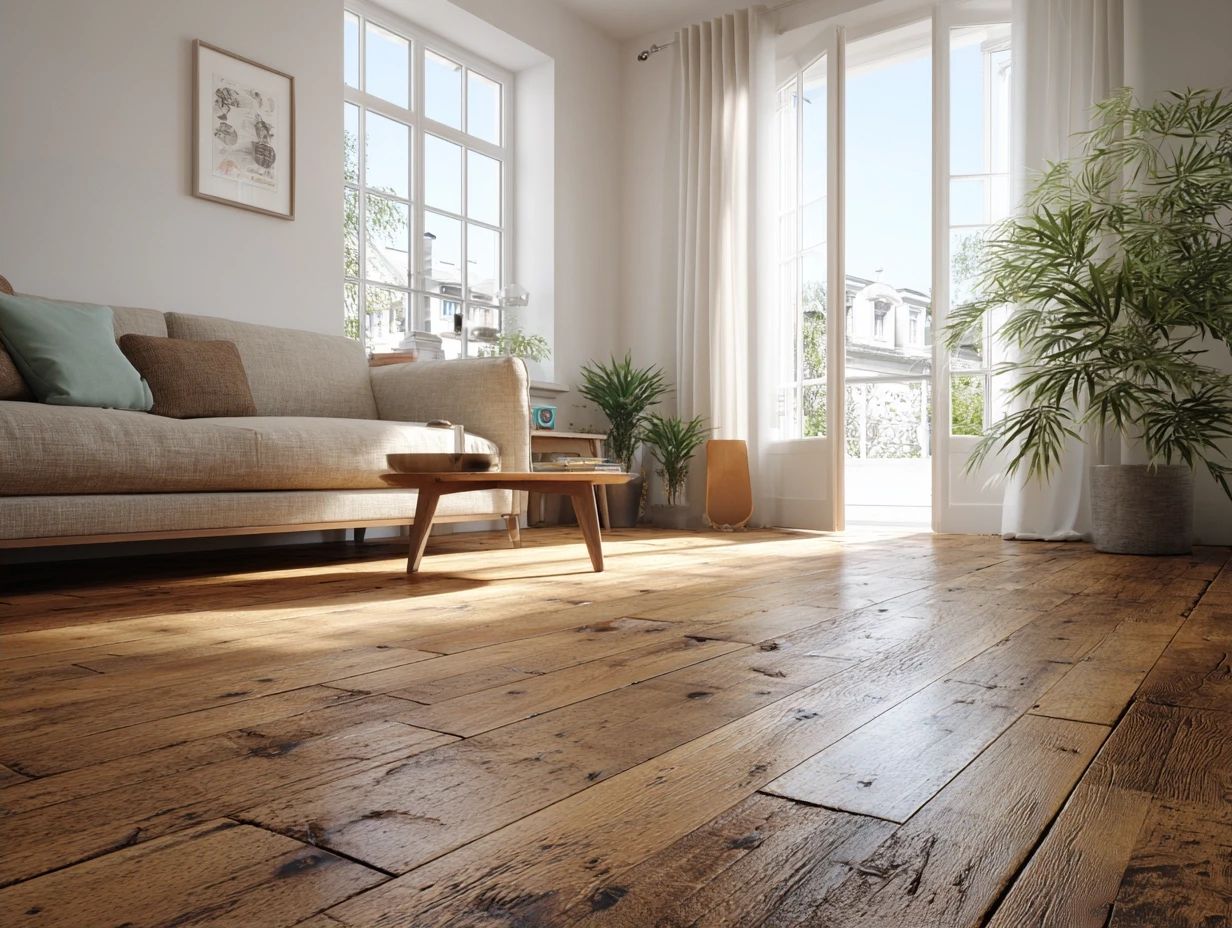
While wide plank flooring has many positives, it also has some negatives that homeowners should think about before deciding to install it. Related insight: Flooring Scale and Proportion – Size Selection Guide can help you understand how the size of your flooring can impact your space.
Cost Considerations
Wide plank flooring can be significantly more expensive than traditional options, with prices ranging from $5 to $15 per square foot, depending on the wood species and quality.
In contrast, narrow planks typically cost between $3 to $8 per square foot. For example, oak wide planks might range around $10-$15, while standard oak narrow planks are often found at $4-$6.
Budget options might include engineered wood, costing around $4-$7 per square foot, while high-end choices like reclaimed barn wood can soar above $15.
When considering installation, wide planks can also save time, as fewer boards require less labor, potentially offsetting their higher material cost.
Expansion and Contraction Issues
Wide planks are more susceptible to expansion and contraction due to humidity changes, which can lead to gaps or buckling if not properly managed.
To mitigate these issues, consider investing in a humidity control system, such as a dehumidifier or HVAC with humidity regulation features.
Installing planks with appropriate spacing-typically 1/4 inch from walls-allows for natural expansion, reducing the risk of damage.
Using hygrometers to check indoor humidity helps you know when to make changes. With consistent care, you can maintain the integrity and appearance of your wide plank flooring, preserving its beauty for years to come.
Maintenance Challenges
Maintaining wide plank flooring can be more challenging than traditional flooring options, requiring regular care to preserve its beauty.
To keep your wide plank flooring in excellent shape, use these care guidelines:
- First, use a microfiber mop weekly to remove dust and debris without scratching the surface.
- For deeper cleaning, opt for pH-balanced wood cleaners specifically designed for hardwood.
- For scratches, restorative products like wood markers or touch-up pens can help blend minor imperfections.
- Place felt pads under furniture to prevent scratches.
- Consider reapplying a finish to the wood every 3-5 years to update its appearance.
If you act soon, your flooring will last longer and look better.
Limited Design Options
While wide plank flooring offers a rustic charm, it may limit design options compared to more diverse traditional flooring styles.
This type of flooring often highlights a rustic or farmhouse look, which might not fit well with modern or minimalist styles.
For instance, while it complements cozy spaces, it might not pair well with sleek, modern furniture. Alternatives such as engineered wood or laminate can provide a wider variety of finishes and widths, allowing for more creative freedom.
If you want options for changing the look of a room, think about using area rugs or different layers to make the space more visually appealing while keeping the general style.
Comparison with Traditional Flooring
Wide plank flooring and regular flooring differ mainly in how they look, how they are put in place, and how long they last.
Width and Length Differences
Wide planks generally range from 5 to 12 inches in width, while traditional flooring often features narrower boards averaging 2 to 4 inches.
The choice between wide and narrow planks significantly impacts a room’s visual aesthetic. Wide planks give a roomy and airy look, perfect for big spaces or layouts with open floors.
Compared to wide boards, narrow boards can make smaller spaces feel cozy and detailed, giving a room a distinct personality. Wide planks can minimize seams, providing a seamless look that many homeowners favor.
Consider the overall style of your space; modern designs often complement wider boards, while traditional decor may benefit from the classic charm of narrower options.
Installation Techniques
Installation techniques vary significantly between wide plank and traditional flooring, with wide planks often allowing for simpler methods like click-lock systems.
These click-lock systems make installation easier, allowing DIY fans to finish the work without using glue or nails. If you are using glue-down or nail-down methods, it’s important to prepare the area. Make sure the subfloor is clean and dry.
A good practice is to acclimate the planks in the installation area for 48 hours, minimizing expansion and contraction issues. A floor scraper helps remove old flooring, which makes it easier to install new wide planks.
Longevity and Wear
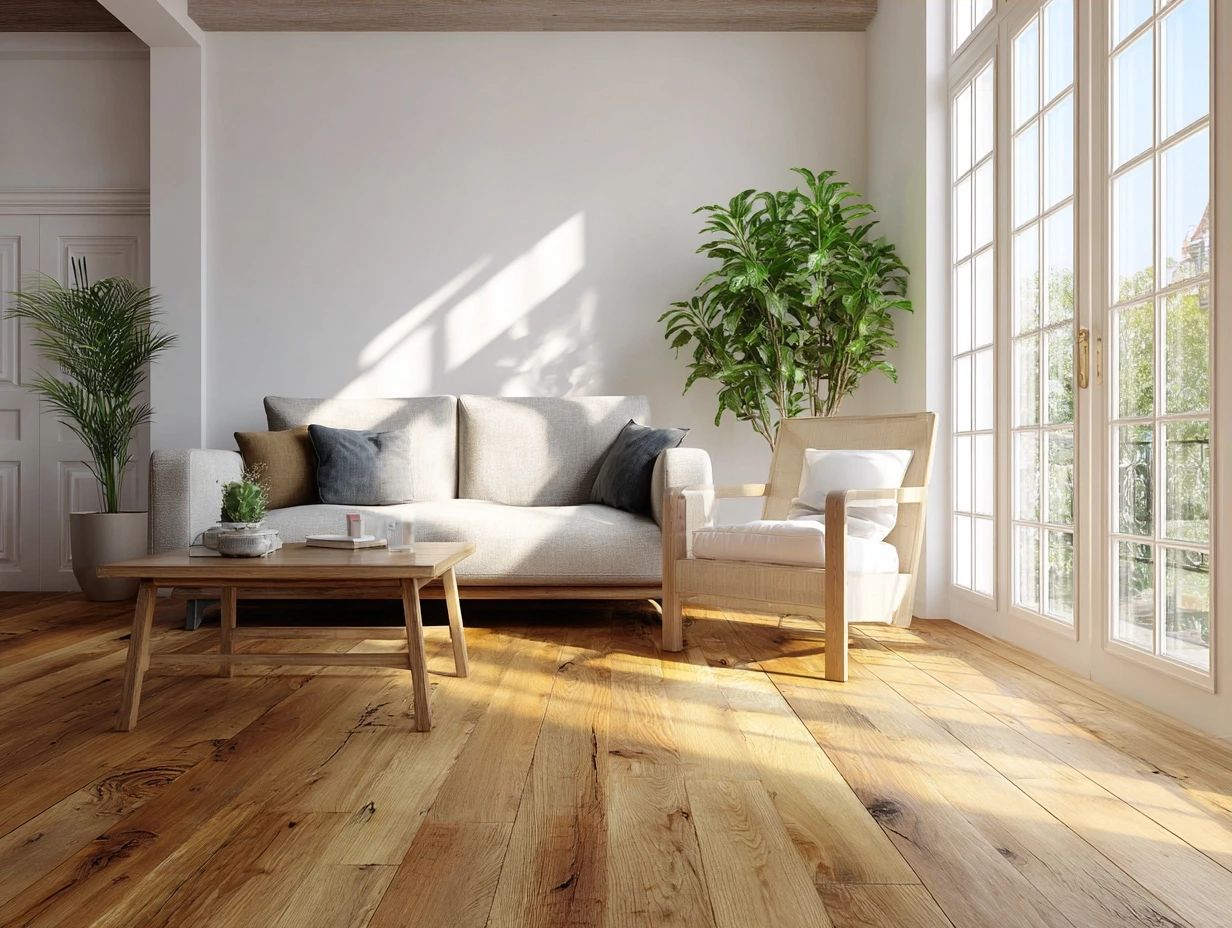
Wide plank flooring typically offers excellent longevity, with quality options lasting upwards of 30 years with proper care, surpassing many traditional floors.
The durability of wide plank floors is largely attributed to the thickness of the boards, which are often 5/8 inches or more compared to standard 3/8 inch options.
To maintain their appearance and extend their life, regular cleaning with a soft broom or vacuum is essential, as well as periodic applications of wood conditioner to prevent drying.
Avoiding harsh chemicals will help preserve the finish. Using area rugs in high-traffic zones can significantly minimize wear and tear, ensuring your investment stays beautiful for decades.
Environmental Impact
The environmental effects of flooring options are gaining attention. Wide plank choices include both eco-friendly and resource-heavy materials.
Wood and General Flooring Market Statistics
Wood and General Flooring Market Statistics
Market Growth and Projection: Market Size and Growth
The Wood and General Flooring Market Statistics Provides a detailed look at the present condition and upcoming trends in the flooring industry, focusing on the wood section and general market changes. This data is useful for figuring out market trends and regional factors that impact growth and investment chances.
Market Growth and Projection data reveals that the Wood Flooring Market was valued at $33,279.5 million in 2019 and is projected to grow to $41,682.2 million by 2027. This growth equates to a Compound Annual Growth Rate (CAGR) of 3.6% from 2020 to 2027, indicating a steady demand for wood flooring, driven by consumer preference for eco-friendly and aesthetically pleasing materials in both residential and commercial projects.
In the broader perspective, the Global Flooring Market is anticipated to expand from $349.66 billion in 2024 to $652.38 billion by 2034, with a robust CAGR of 6.5% between 2025 and 2034. This important growth shows more building projects around the world, along with new flooring materials and technology that improve strength and make upkeep easier.
- Regional Market Shares: The Asia Pacific region has an important part, controlling a large 58.79% share of the wood flooring market in 2019. Despite the share dropping to 46% in the flooring market by 2024 The region is important because of fast urban growth, more people, and increasing incomes that drive building and renovation.
The Wood and General Flooring Market Statistics underline the importance of strategic investments in the Asia Pacific, given its dominant market share and potential for further expansion. Companies that prioritize new ideas and eco-friendly practices in flooring options are ready to profit from increasing market demand, fueled by changing consumer tastes and worldwide building trends.
Sourcing and Sustainability
Getting wood in a responsible way is important; selecting reclaimed wood or certified sustainable choices can significantly lower the environmental impact of wide plank flooring.
To make eco-friendly decisions, choose wood with FSC certification, which confirms responsible management of forests. Some great examples include white oak and maple, known for their durability and aesthetic appeal.
Think about using wood from old barns or factories; this gives a unique look and reduces waste.
When selecting materials, verify certifications and ask suppliers about their sourcing practices. Tools like the National Wood Flooring Association’s guide can help you look into options and find reliable suppliers focused on environmentally friendly practices.
Recycling and Disposal
Recycling options for wide plank flooring vary based on material type, with many manufacturers now offering take-back programs to reduce waste.
For hardwood floors, check with local recycling centers that accept wood. Brands like Armstrong and Mohawk often have take-back initiatives, allowing you to return old planks for recycling or repurposing.
Another option is donation; organizations such as Habitat for Humanity ReStores may accept usable flooring.
Consider upcycling projects-using the flooring for furniture, art, or home dcor can give a second life to these materials while contributing to sustainability efforts.
Final Thoughts on Wide Plank Flooring
Wide plank flooring can improve the look and worth of your home, making it a common choice for many homeowners.
This flooring style offers a rustic look and creates a roomy feel while fitting in with current minimalist trends and the use of natural materials.
Consider using reclaimed wood for added character and sustainability; brands like Reclaimed Wood Exchange offer a variety of choices.
Wide planks can be easier to install and maintain compared to traditional narrower boards. They stay strong and do not warp easily, even in changing weather, which makes them a good option for long-term use.
Investing in wide plank flooring can yield higher resale value and attract potential buyers drawn to stylish, functional spaces.
Making an Informed Decision
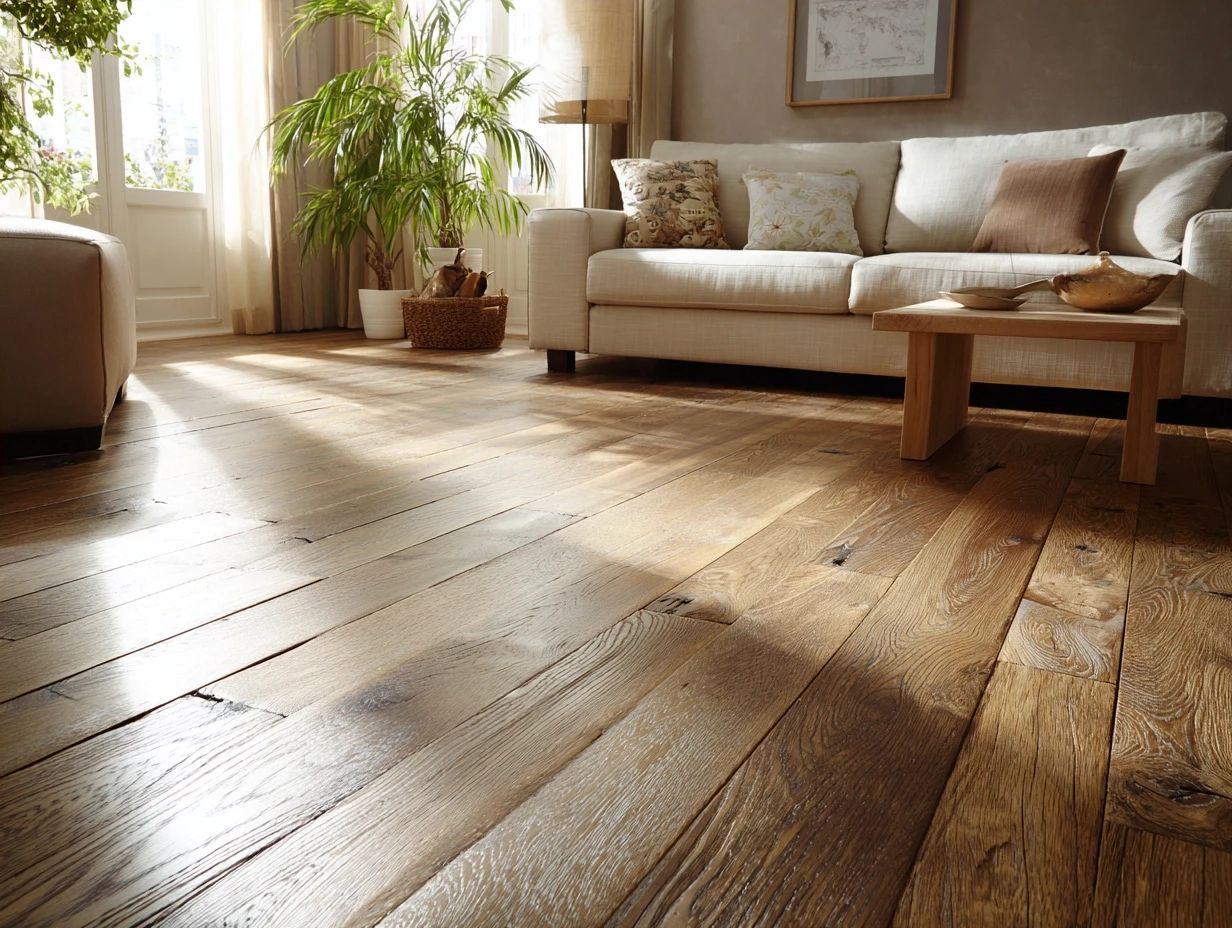
To make an informed decision about wide plank flooring, consider your lifestyle, budget, and long-term maintenance needs before proceeding.
Start by evaluating the size and layout of your rooms. Larger spaces typically benefit from wider planks, which create an open, cohesive look.
Next, think about your home’s style; rustic finishes may suit farmhouse aesthetics, while sleek, matte options are ideal for modern decor.
Visit showrooms to see samples and think about talking to a flooring expert for professional advice. They can help assess how light and wear will affect different types of wood, ensuring you choose a floor that aligns with both your aesthetic desires and practical requirements.
Additional Resources
If you want to know more about wide plank flooring, many resources can help you with your selection and installation.
- Consider exploring websites like Houzz for design inspiration and product recommendations.
- The DIY Network offers detailed installation guides that walk beginners through the process step-by-step, making it simple to understand.
- Forums like Reddit’s r/HomeImprovement provide a platform for discussing specific experiences and troubleshooting challenges.
- Articles from flooring manufacturers like Armstrong or Mohawk can provide useful information about the durability and care of different wide plank choices, helping you choose what works best for your home.
Frequently Asked Questions
What is the Wide Plank Flooring trend?
The Wide Plank Flooring trend involves using planks of wood that are typically 5 inches or wider and longer for flooring, instead of the usual thin planks.
What are the pros of using Wide Plank Flooring?
Wide Plank Flooring can create a more spacious and open feel in a room, as well as give a more modern and luxurious look to a space. The wider planks also mean fewer seams and joints, resulting in a more seamless and uniform appearance.
What are the cons of using Wide Plank Flooring?
Wide Plank Flooring can be more expensive than traditional narrow plank flooring, as wider planks require more wood and may also require special installation techniques. Wider planks can warp and cup if they are not installed or maintained correctly.
Is Wide Plank Flooring suitable for all types of homes?
While Wide Plank Flooring can work well in most homes, it may not be the best choice for smaller or more traditional spaces. The wider planks can sometimes overwhelm a smaller room and may not fit with the aesthetic of a more traditional home.
What are the different types of wood used for Wide Plank Flooring?
There are many types of wood used for Wide Plank Flooring, including oak, hickory, maple, and pine. Each type of wood has its own unique characteristics and can give a different look and feel to a space.
Can Wide Plank Flooring be used in high-traffic areas?
Yes, Wide Plank Flooring can be used in high-traffic areas. However, you should pick a strong type of wood and take care of the flooring to avoid damage. Wider planks can scratch and dent more easily, so it’s important to pick a wood type that works well in busy areas.
